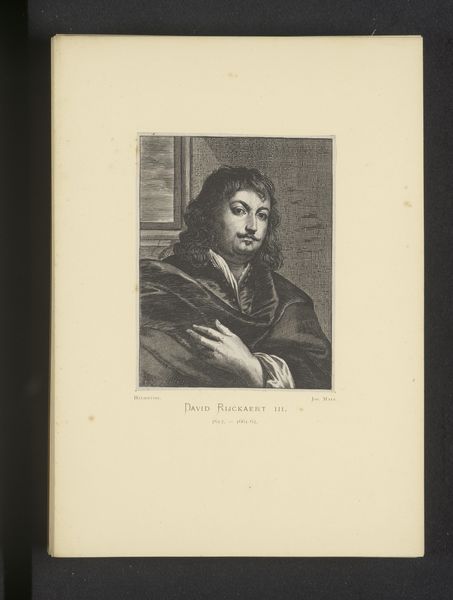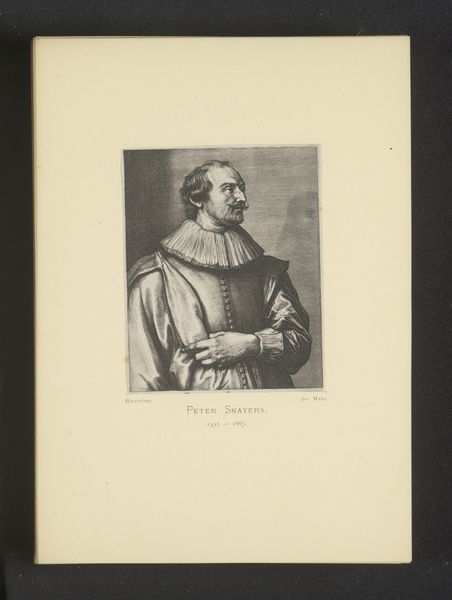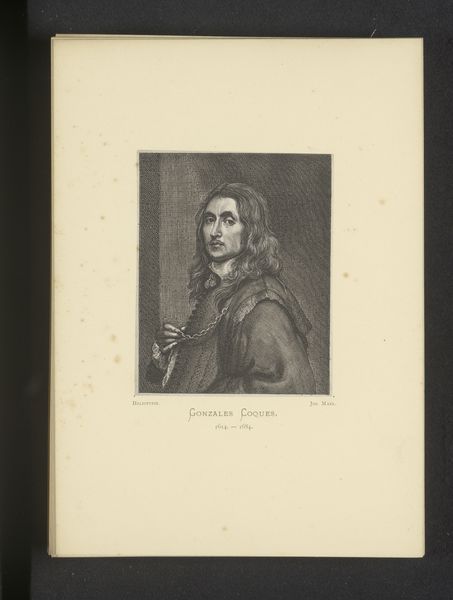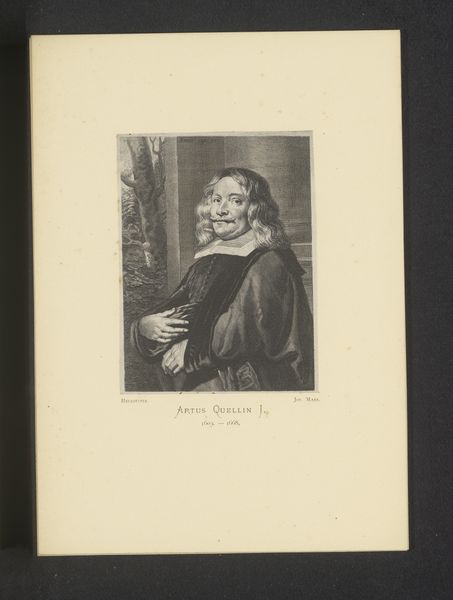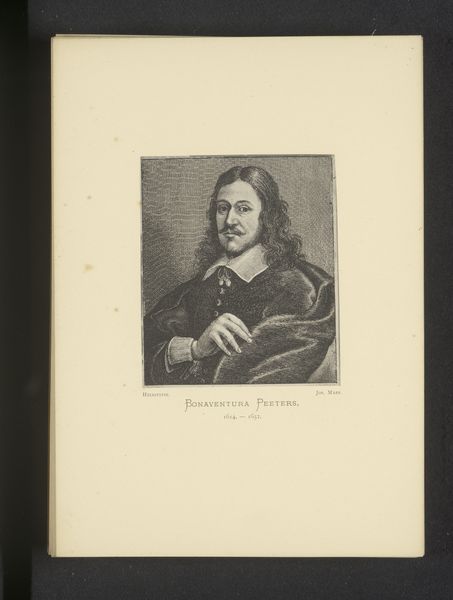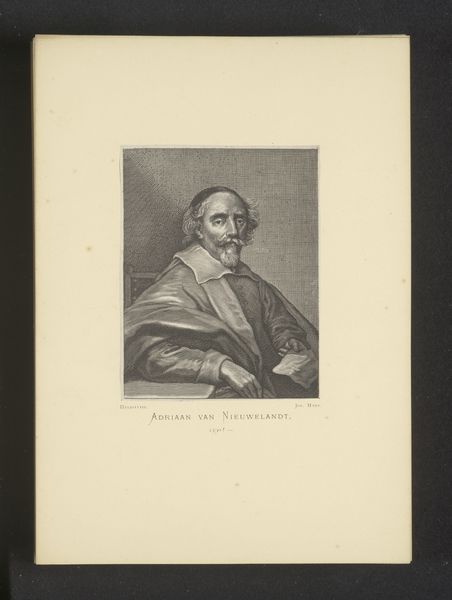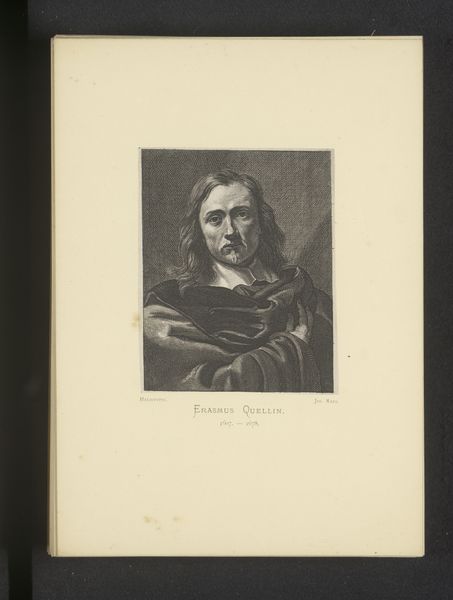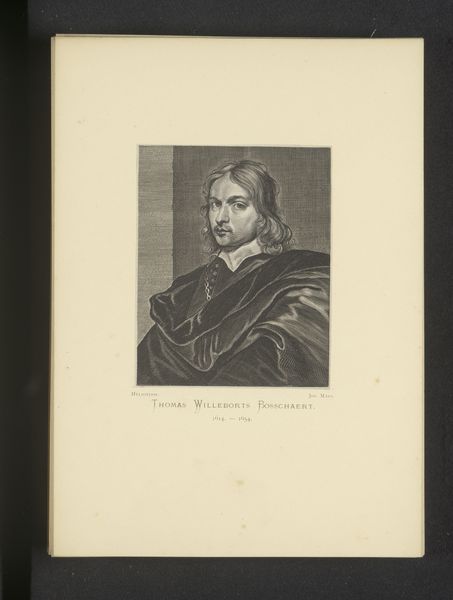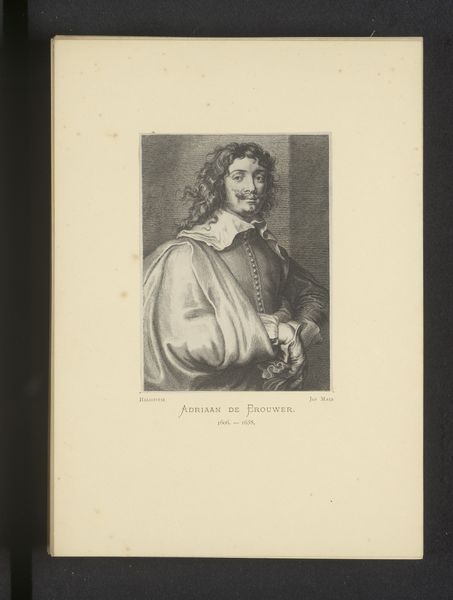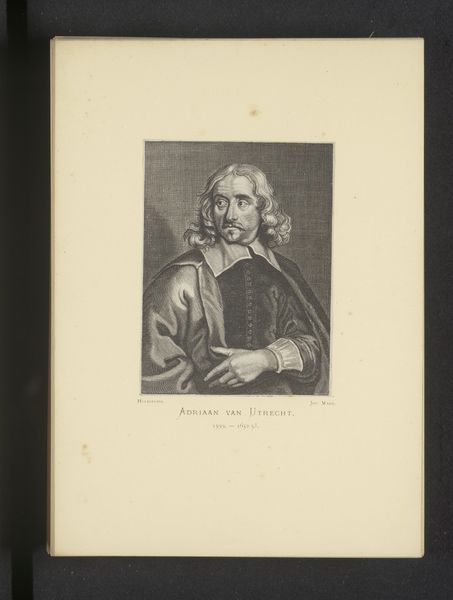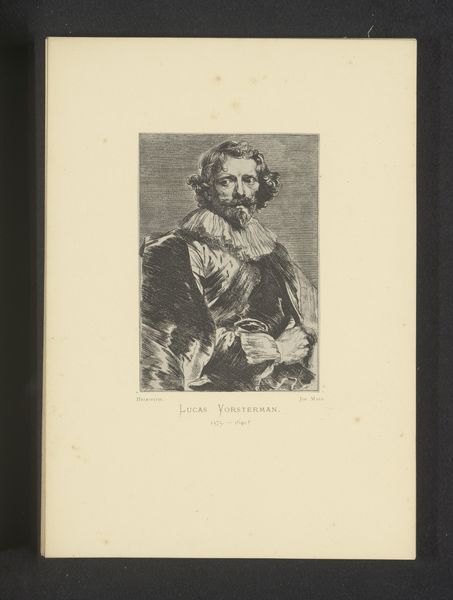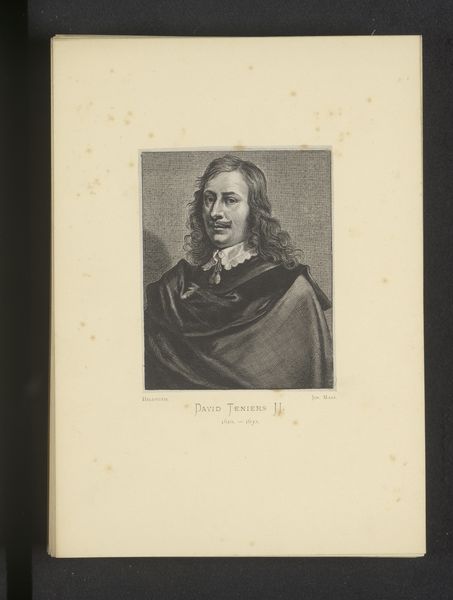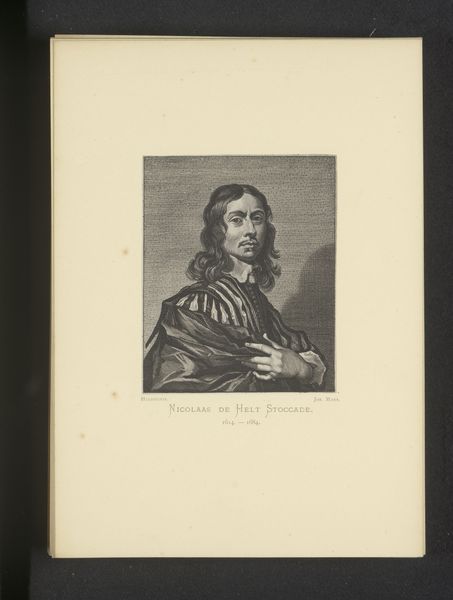
Reproductie van een gravure van een portret van Balthasar Gerbier door Coenraet Waumans before 1877
0:00
0:00
Dimensions: height 107 mm, width 88 mm
Copyright: Rijks Museum: Open Domain
Editor: So, this is a reproduction of an engraving, made before 1877, depicting Balthasar Gerbier. It's a print on paper, credited to Joseph Maes, after Coenraet Waumans. I find it really interesting how the printmaking process creates this intricate play of light and shadow, giving the portrait a somber mood. What stands out to you? Curator: Considering this is a reproduction of an engraving, the process of production becomes particularly interesting. We're not looking at an original artwork in the traditional sense, but at a copy created through labor-intensive methods. Think about the engraver; what social class were they working in? How did the commercial forces shape their choices and their ability to create art? The materiality of paper itself—where was it sourced? Who made it? How has time impacted this specific paper's survival, influencing its current state? Editor: That's a fascinating angle! I hadn't considered the labor involved in creating a reproduction. Does the act of reproducing affect its artistic value in any way? Curator: It definitely complicates the notion of artistic value! A materialist approach asks us to shift our focus. Instead of only concerning ourselves with authorship or aesthetic quality, we consider how this reproduction participates in larger networks of distribution, consumption, and power dynamics. Whose interests does it serve? Why was this image deemed worthy of reproduction and wide distribution? Think about this Baroque portrait in contrast to how imagery is reproduced and circulated today. Editor: That really changes how I see this image! I was initially just appreciating it as a portrait, but now I am wondering how the choice of materials and processes shape meaning and reflect the social contexts of production. Thanks for sharing this insight. Curator: Likewise! Looking closely at art through a material lens really helps expose the stories of labor and social contexts embedded within, offering valuable insights into our cultural history.
Comments
No comments
Be the first to comment and join the conversation on the ultimate creative platform.
